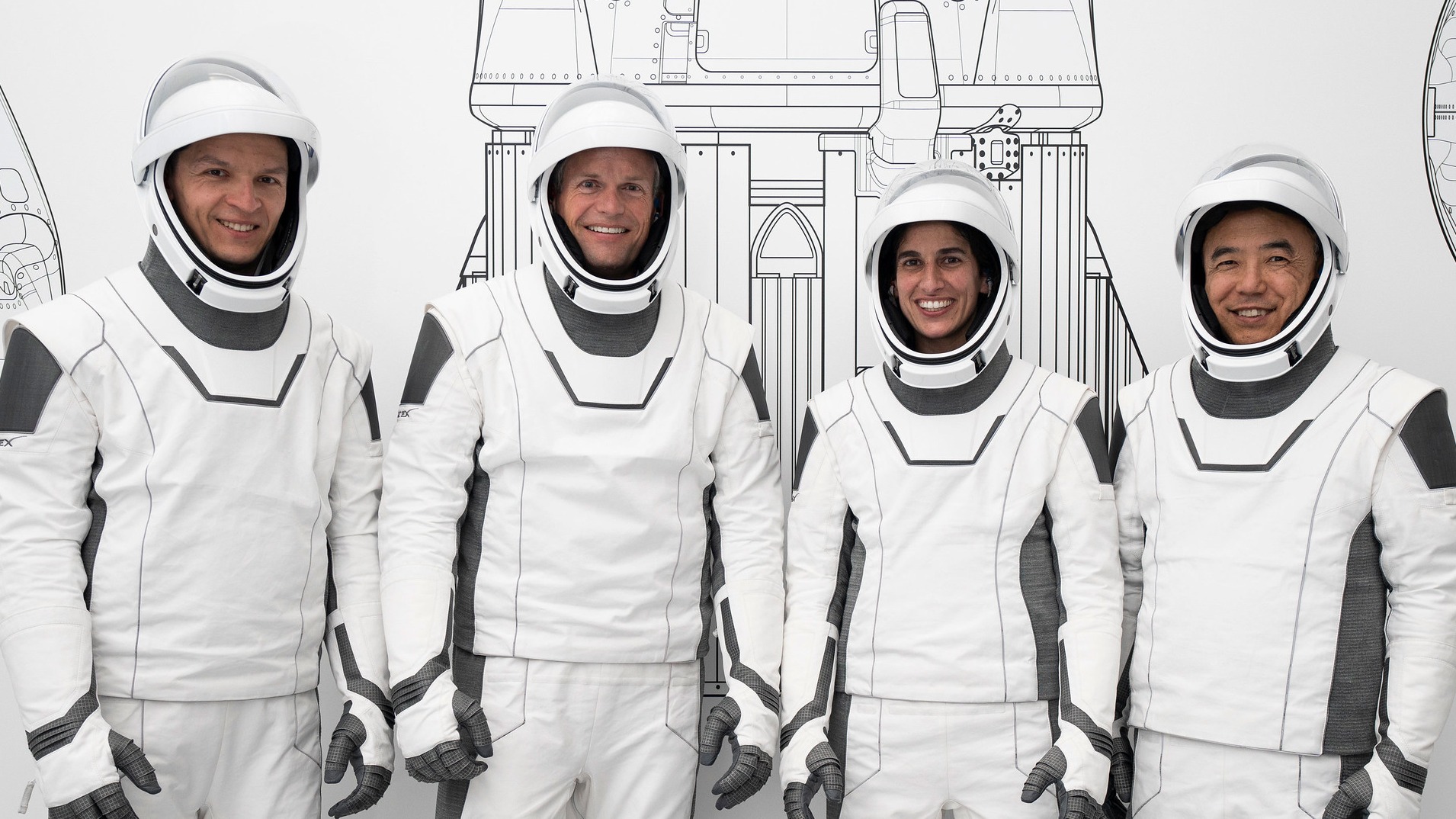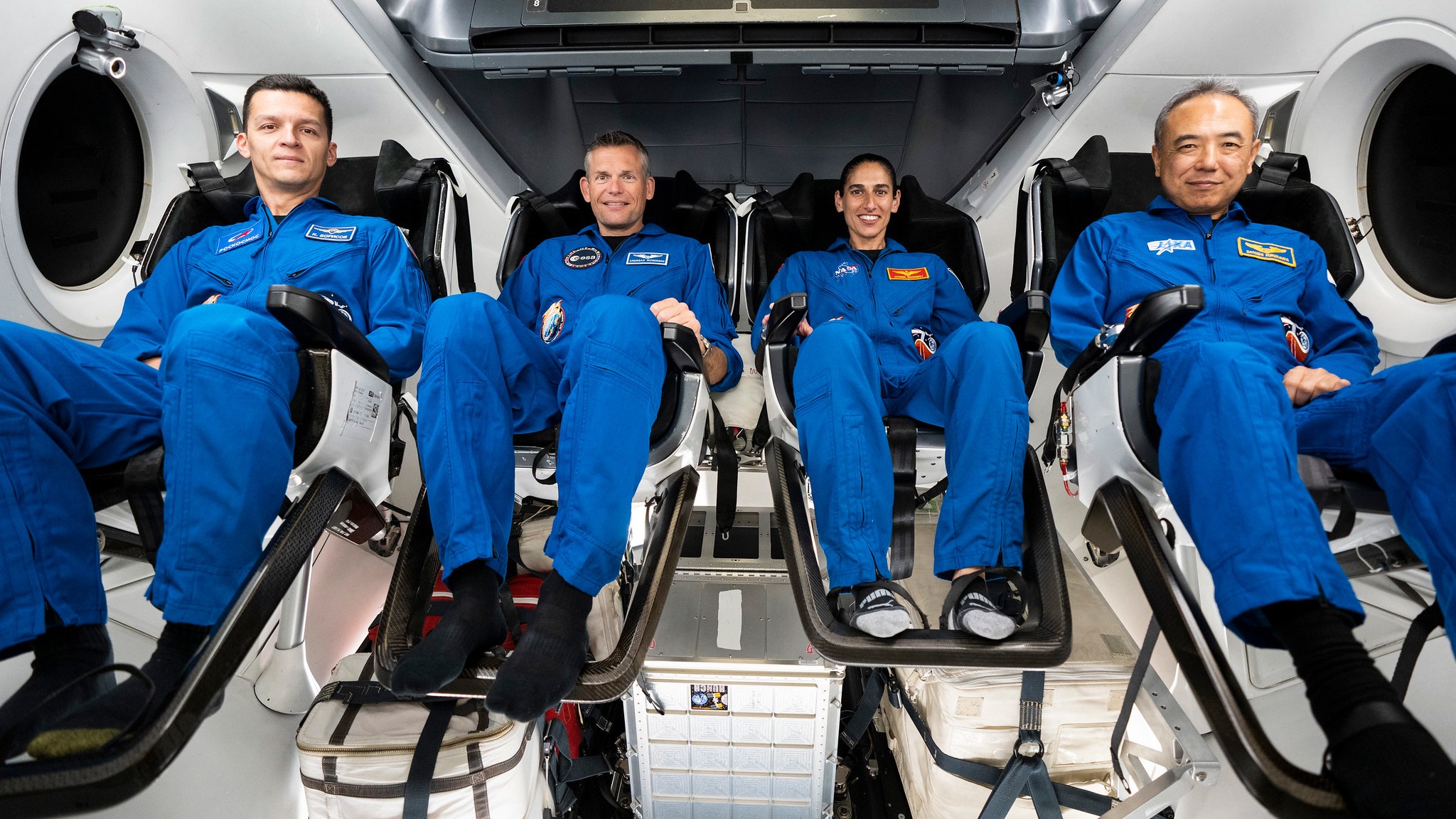SpaceX's Crew-7 mission will launch international crew to ISS next week
The launch is set for Aug. 25 using a SpaceX Crew Dragon capsule.

A multinational crew of astronauts is ready for their journey to space.
Four astronauts from four countries will fly on SpaceX Dragon capsule to the International Space Station for a six-month mission. They will launch from NASA's Kennedy Space Center on SpaceX's Crew-7 flight no earlier than Aug. 25, and you can watch the whole thing live here at Space.com, via NASA Television.
"It's one of the things I think we're most proud of, is what we represent by being an all-international group," NASA astronaut Jasmin Moghbeli, who will become the second Iranian-American astronaut to reach space, told reporters during a livestreamed press conference on July 25.
"It's something that is very special and important to each of us, to represent what we can do when we work together in harmony," added Moghbeli of her three Crew-7 colleagues — European Space Agency (ESA) astronaut Andreas Mogensen, Japan Aerospace Exploration Agency (JAXA) astronaut Satoshi Furukawa, and Konstantin Borisov of Russia's space agency, Roscosmos.
Related: SpaceX Crew-7 astronaut plans to snap aurora photos on the ISS
International cooperation in space is shifting quickly. NASA and JAXA are both signatories of the Artemis Accords for peaceful moon exploration, as are some ESA member states. The alliance currently includes 28 countries, most recently Argentina, which signed during a trip by NASA Administrator Bill Nelson to South America.
NASA's Artemis program aims to land astronauts on the moon in 2025 or 2026, pending success of the Artemis 2 crewed mission around the moon set for November 2024 and hardware development of surface spacesuits and SpaceX's Starship vehicle, which will be Artemis' first lunar lander. Over the longer haul, Artemis aims to establish a long-term human presence on and around the moon.
Breaking space news, the latest updates on rocket launches, skywatching events and more!
Russia is not a signatory to the Artemis Accords and has its own crewed moon plans with China; the two countries recently signed Venezuela into what they say will be their own international agreement. That said, NASA's relations with Russia have mostly been normal when it comes to ISS activities, and Russia has pledged to stay with the orbiting complex until at least 2028. (All other participating countries have agreed to remain until 2030.)
Such ongoing cooperation with Russia is increasingly rare; NASA, ESA and other major space players ended many of their collaborations with Russia after the nation's invasion of Ukraine in February 2022. China and NASA also cannot work together much, under longstanding U.S. policy rooted in security concerns.
The Crew-7 astronauts (and their agencies) have been sending out positive partnership messages despite such issues. For example, Mogensen emphasized how well the ISS alliance has been working together throughout the 25 years the complex has been in orbit.
"One lesson that we've learned through the international partnership is how important that cooperation has has been, and how much we can actually achieve together when we work together," he said during the same press conference.
As always, the dinner table will host international meals with local flavors provided by the respective crews. Moghbeli, whose family celebrates both Christmas and Hannukah, is considering some way of bringing latkes to space, she told Space.com in an individual Zoom interview later that on July 25. She also plans to bring Persian food, but said exactly what will remain a secret for now.
Furukawa plans "steamed rice, Korean raw curry and mochi with the soft balls," he said in an individual Zoom interview. Borisov didn't provide specifics about what Russia will have for him this time, but said during the press conference that he is "just excited that there will be so much food," estimating there are at least 100 different combinations the astronauts could sample during their time in space.
For spare time activities, Borisov said in an individual interview that he would love to continue his yoga practice, but he is not sure how to achieve that in zero gravity, given most of the positions require balancing against something. Mogensen told Space.com he plans to photograph auroras and lightning for work and pleasure.
Regretfully, Furukawa said he likely won't replicate the epic Lego build that he conducted on the ISS in 2012, assembling a space station in a sealed box. "Building Lego in microgravity is very special, because you need to use special techniques to keep it in place," he said during an individual interview with Space.com. "You cannot put them on a table; you need to have kind of special Velcro, or rubber bands, to keep them in."
Crew-7 is expected to stay about 190 days on the ISS, NASA officials said in a press conference. A Soyuz spacecraft mission will launch with its own three-person crew in mid-September for a 190-day mission, carrying Russian cosmonauts Oleg Kononenko and Nikolai Chub, along with NASA astronaut Loral O'Hara.
A Russian Soyuz vehicle and one of the nation's Progress cargo spacecraft recently had sudden leaks of coolant while docked with the ISS. Both NASA and Roscosmos independently concluded that those incidents were due to something in the external environment, NASA officials said during another livestreamed briefing on July 25.
Also expected during the Crew-7 mission will be a reboost of the ISS' orbit using an already docked Northrop Grumman Cygnus cargo spacecraft. This will be the third such maneuver with a Cygnus, which serves as a backup to the main reboost plan that relies upon Russian Progress spacecraft.
The ISS naturally sinks deeper into Earth's atmosphere over time due to drag from molecules of air, and the station requires these boosts to stay flying. With Russia expected to leave the ISS sooner than the other partners, NASA is working on other ways to keep the space station going after Russia's departure.

Elizabeth Howell (she/her), Ph.D., was a staff writer in the spaceflight channel between 2022 and 2024 specializing in Canadian space news. She was contributing writer for Space.com for 10 years from 2012 to 2024. Elizabeth's reporting includes multiple exclusives with the White House, leading world coverage about a lost-and-found space tomato on the International Space Station, witnessing five human spaceflight launches on two continents, flying parabolic, working inside a spacesuit, and participating in a simulated Mars mission. Her latest book, "Why Am I Taller?" (ECW Press, 2022) is co-written with astronaut Dave Williams.

